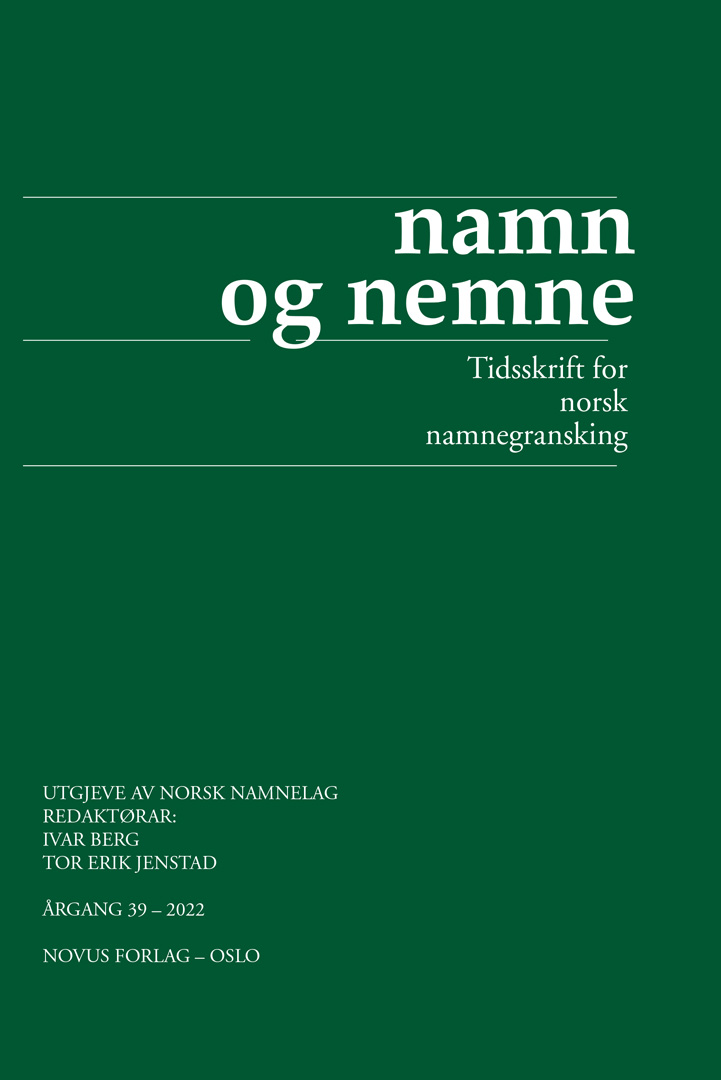Sammendrag
In this article, I will go through previous interpretations of place-names based on Old Norse stjór- and suggest a new interpretation. Most scholars have been uncertain regarding these names. On the basis of Rygh and Kjær’s reading, Hoel has explained that Skjør in Eidsberg derives from stjór- in the sense of ‘staff’ and he sees the name as a reference to the elongated ridge on which the farm is located. Bjorvand expands this explanation to include Stjørdalen, Stjørna and Skjørin in Trøndelag, believing these names to refer to straight rivers or fjords. My objection is that there is no evidence that ‘staff, pole’ was a possible meaning of Norse stjór-, nor does the terrain in the respective places fit well with such a meaning. To these names I add the part of Lake Øyangsvatnet called Stjørna, 20 km from the fjord of Stjørna, and my point is that four out of these five stjór-names are linked to T-shaped bodies of water. This means that they resemble the shape of early, primitive anchors for which the Old Norse word is stjóri. Stjór-names may refer to this resemblance. My interpretation of Stjørna relies on the reconstructed sea-levels of the Early Iron Age. At the end of the article, I take a closer look at the potential of reconstructing past landscapes in connection with interpreting place-names, and my reading of Lake Styran in Eastern Sweden is based on a reconstructed water level.

Dette verket er lisensiert under Creative Commons Attribution-ShareAlike 4.0 International License.
Opphavsrett 2022 Eldar Heide

